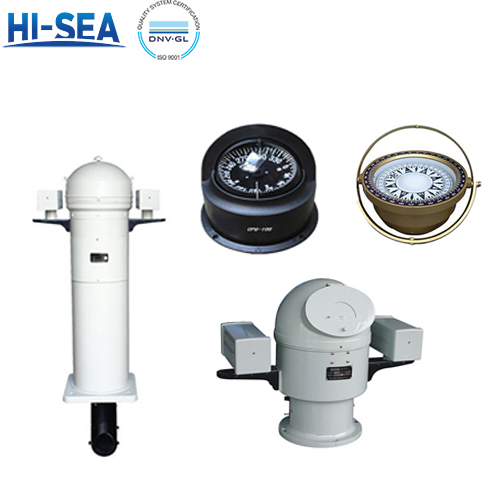
Marine Magnetic Compass
Overview
The standard & authentication: GB/T 14108-2011, IEC, ISO & IMO; approved by CCS.
Principle of Operation: Magnetic compasses work based on the Earth's magnetic field. The compass needle is a magnet that aligns itself with the Earth's magnetic lines of force. One end of the needle points to magnetic north.
Applications
Widely used on all types of vessels for general navigation.
Standard equipment for small boats, sailboats, and recreational vessels.
Advantages
Simple and reliable technology.
Cost-effective.
Generally lightweight and easy to install.
Categories
Table Model Marine Compass
Vertical Magnetic Compass
Projection Magnetic Compass
Reflector Magnetic Compass
Brass Magnetic Compass
Plastic Magnetic Compass
Boat Compass
What is Liquid Compass
The liquid compass is a sort of magnetic compass when classified by design. In a liquid compass, the compass housing is filled with a liquid, often oil. The liquid serves to dampen the movement of the compass card and the magnetic needle, reducing oscillations and providing a more stable reading. Liquid compasses are commonly used in marine applications where stability and accuracy are crucial, especially on vessels with significant motion, such as in rough seas. The damping effect of the liquid helps in achieving smoother and more reliable readings.
*expanding: Dry compass also belongs to magnetic compass. In a dry compass, the compass card and magnetic needle move within a housing without the presence of a liquid. The movement is typically dampened by air friction or other mechanical means. Dry compasses are simpler in construction, lighter, and generally more affordable. However, they may be more susceptible to oscillations caused by the motion of the vessel. Therefore, the liquid compasses are often preferred on larger vessels where stability is a priority, while dry compasses may be suitable for smaller boats or as backup compasses.
Installation requirements
Magnetic compass should be installed at location convenient for use. Could be installed flat or sided. But the lubber’s lines should be parallel or overlap the vertical axis surface of the vessel body with a deviation less than 0.5.
Magnetic compass should be installed leveled and secured. The base line of the compass box should be vertical to the horizontal cross-section of the vessel. In addition, the compass should be installed when the vessel is floating.
A distance should be kept between the compass being installed and steel or iron equipment or magnetic objects. Any wiring close to the magnetic compass should be parallel wires in pairs to avoid influence to the magnetic compass.
Attention:
Affected by local magnetic influences and deviations, which may require compensation.
Susceptible to errors caused by metal objects and electronic equipment on the vessel.





